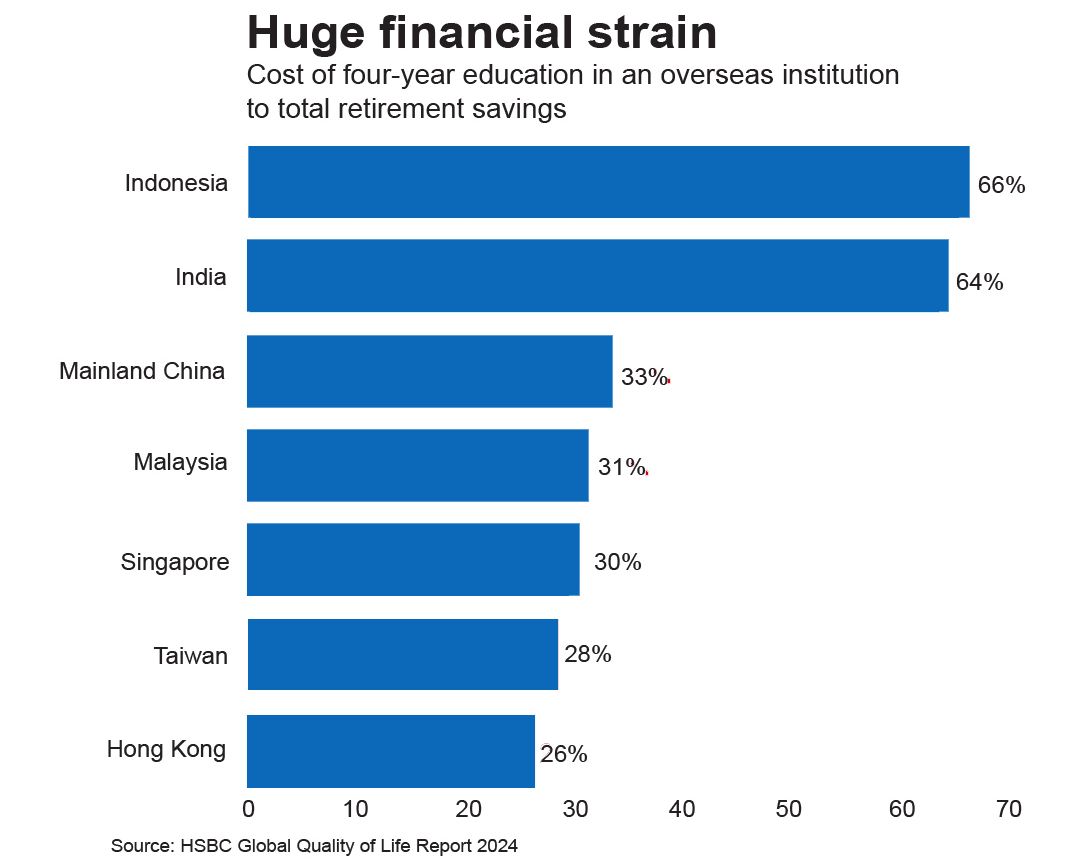A growing number of affluent parents in Asia are prioritizing international education as a significant investment in their families, but not without substantial financial strains, a new study finds.
A three- or four-year degree programme in popular overseas study destinations – the United States, the United Kingdom, Australia and Canada – can cost between US$192,000 to US$256,000 per child. That could use up to 66% of parents’ retirement savings in markets like India and Indonesia and around 20% in Hong Kong, according to the HSBC Global Quality of Life Report 2024.

The survey, based on interviews with about 11,500 affluent parents in 11 markets worldwide, also shows that only 55% of respondents in Asia have an education saving plan. Nearly a third (31%) expect their child to take on student loans, 45% are hopeful for scholarships, and 22% would even consider selling assets to fund their child’s education.
On top of securing the required funding, juggling multiple tasks, such as helping their child select the right course and university and ensuring they meet the admission criteria for the desired university, significantly contribute to the stress levels of Asian parents.
While parents have concerns about different aspects of their child’s wellbeing overseas, financial concerns (95%) are high on their minds, compared to social or mental concerns (75%) and physical or health concerns (71%).
The ability to set up essential banking services in their new location (41%), keeping safe from financial scams (39%), and maintaining an emergency fund for unexpected costs (38%) are the top three financial concerns, according to the survey.
“Despite the rising cost of overseas education, over half of affluent families in Asia are planning or have already sent their children to study abroad,” says Kai Zhang, head of wealth and personal banking, South Asia, at HSBC.
Top education destinations
While China and India remain the biggest international student populations, an increasing number of young people in Southeast Asia are following suit, the study finds.
Beyond the West, Singapore and Australia are becoming top choices for international education among Asian affluent families. “This trend is due to their close geographic and cultural ties, excellent and relatively affordable education systems, and overall quality of life,” Zhang says.
Australia ranks within the top five preferred education destinations for students from Hong Kong, Singapore, mainland China, Malaysia, the United Arab Emirates, and Indonesia. Singapore emerges as a top choice for educational pursuits among individuals from mainland China, India, Indonesia, Malaysia, and Taiwan.
“International education is an important aspiration for Asian families to boost future prospects, gain diverse perspectives and develop other skills such as independence and resilience. Asian parents, in particular, seek more than just simplified banking solutions. They also look for comprehensive support in overseas education planning, relocation and accommodation assistance, and advice on wellbeing and employment opportunities,” Zhang adds.









